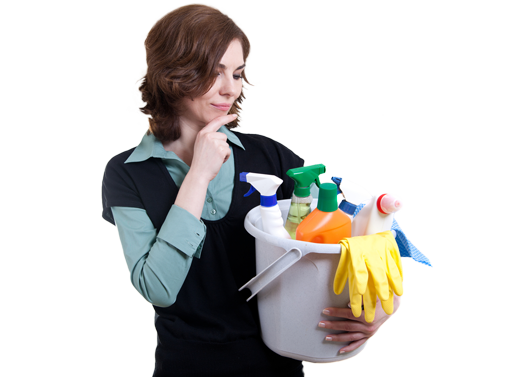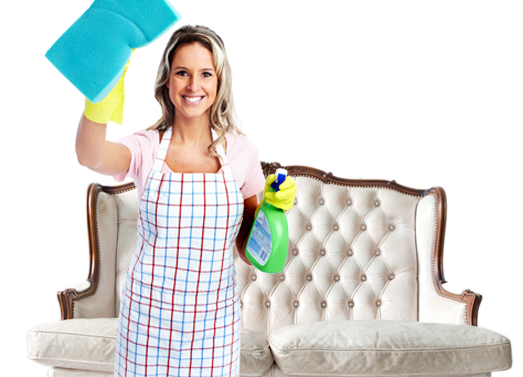Sleek and Spotless: Perfecting Your Curtain Cleaning Routine
Posted on 02/07/2025
Sleek and Spotless: Perfecting Your Curtain Cleaning Routine
Curtains are more than just decorative pieces; they are integral elements that define the ambiance of any space. Maintaining your window dressings in pristine condition has both hygienic and aesthetic benefits. If your curtains are left unattended, dust mites, allergens, and odors can accumulate, casting a shadow over your interior's allure. That is why perfecting your curtain cleaning routine is essential for a healthy and inviting home. In this comprehensive guide, you will discover expert tips and proven techniques for keeping your curtains both sleek and spotless.

Why Curtain Cleaning is Essential
Many homeowners overlook the importance of regular curtain maintenance, unaware of the variety of pollutants and dirt that drape their soft fabrics. Here are a few key reasons why curtain cleaning should be part of your household routine:
- Improved Air Quality: Curtains trap dust, pollen, pet dander, and other airborne particles, affecting indoor air quality.
- Allergen Reduction: Regular cleaning helps reduce allergens that can trigger asthma and allergies, especially in sensitive individuals.
- Extended Fabric Lifespan: Keeping your curtains clean prevents premature fabric deterioration and fading.
- Enhanced Aesthetics: Spotless curtains uplift the overall look and feel of your living spaces.
- Preventing Odors: Accumulated grime and humidity can cause unpleasant odors, which regular cleaning can easily prevent.
Sleek and Effective Curtain Cleaning Methods
Before you start, it's vital to know what type of fabric your curtain is made from, as different materials require different care. Let's dive into various methods that guarantee sleek, spotless results for your drapes.
1. Regular Dusting and Vacuuming
To perfect your curtain cleaning routine, incorporate routine dusting and vacuuming. Use a vacuum cleaner with an upholstery attachment or a handheld vacuum to gently remove surface dust. For extra protection:
- Dust your curtains at least once a week for high-traffic areas.
- Use a soft-bristled brush or lint roller for delicate fabrics.
- Pay close attention to curtain pleats and hems, which can harbor hidden dust.
2. Spot Cleaning Stains
Removing stains promptly is key to maintaining spotless curtains. The sooner you address a spill or mark, the less likely it is to become permanent. Here's how to tackle common curtain stains:
- Gently blot stains with a clean cloth - never rub, as this can spread the stain.
- Use a solution of mild detergent and water for most stains.
- For greasy spots, a tiny drop of dish soap can work wonders.
- Always test the cleaning agent on a hidden section first to prevent discoloration.
3. Machine Washing Curtains
Some curtains, especially those made from cotton, polyester, or linen blends, are machine washable. Ensure you check the care label before proceeding. For sleek results:
- Remove all hooks, rings, and hardware.
- Shake out dust in the open air before washing.
- Wash on a gentle cycle with cold water and a mild detergent.
- Hang curtains back while slightly damp to prevent creases and promote a crisp finish.
- Never overfill the washing machine; wash in small loads for best results.
4. Handwashing Delicate Curtains
Some fabrics, such as silk or lace, require extra care. Handwashing these curtains will preserve both their luster and longevity. Follow these tips:
- Use lukewarm water and a gentle, specialist detergent.
- Submerge the curtains and swish gently without aggressive wringing.
- Rinse thoroughly and press out excess water using a towel.
- Hang dry away from direct sunlight to avoid fading.
5. Dry Cleaning for Specialty Curtains
Certain curtains, including those with intricate embellishments or non-washable linings, should always be professionally dry cleaned. Consult the manufacturer's guidelines, and if in doubt, leave it to the experts.
Tips for Maintaining Sleek Curtains Year-Round
Perfecting your curtain cleaning schedule is about more than just deep cleans. Here are additional tips for keeping your window treatments perpetually fresh:
- Steam curtains regularly: A handheld steamer can refresh curtains between washes, removing light wrinkles and killing bacteria.
- Avoid cigarette smoke: Keep smoking away from drapes to prevent tough-to-remove odors and discoloration.
- Ventilate the room: Regular airflow prevents moisture buildup that can lead to mildew.
- Rotate curtains: If possible, switch up your curtains seasonally to allow for thorough cleaning and airing out.
- Sun protection: Use sheer or UV-protective curtains on windows that receive harsh sunlight to minimize fading of your best drapes.
Frequently Asked Questions about Curtain Cleaning
How often should I clean my curtains?
For most households, deep curtain cleaning every 3-6 months is sufficient. However, if you have pets, allergies, or live in a highly polluted area, consider cleaning them more often. Don't forget to dust or vacuum at least once a week!
Can I use bleach to clean my curtains?
Bleach should be used with caution. While it can disinfect and brighten whites, it may weaken fibers or cause yellowing over time. Always use the gentlest cleaning agent first and read fabric care labels carefully.
What is the best way to dry curtains?
Air drying is the safest way to dry curtains, as it prevents shrinkage and preserves fabric integrity. Hang them back on the rod or use a clothesline. For heavier fabrics, ensure they dry evenly to avoid stretching.
Should I iron my curtains?
Ironing can be useful for crisp, slick curtains. Use a low heat setting and iron on the reverse side. Many fabrics respond well to steaming, which removes wrinkles without direct heat.
Is professional curtain cleaning worth it?
For specialty drapes, thick or layered curtains, or when in doubt about your curtain's material, professional cleaning is usually the best choice. Professionals use specialist techniques and products, ensuring longevity and a spotless finish.
Choosing Curtain Fabrics for Easy Cleaning
If you're renovating or shopping for new window treatments, consider how each fabric influences both cleanliness and maintenance. Here are top choices for easy-to-clean curtains:
- Cotton: Lightweight, breathable, and machine washable; ideal for most rooms.
- Polyester: Durable with excellent color retention, often stain-resistant.
- Linen: Offers a crisp look, but may need gentle washing and air drying.
- Microfiber: Resists dust and pet hair, simple to vacuum or wipe clean.
- Blends: Cotton-poly blends combine the best features - toughness and easy care.
For delicate aesthetics, such as silk or velvet, be prepared for professional cleaning or more attentive handwashing.
DIY Natural Curtain Cleaning Solutions
Many household products can double as gentle, effective cleaning agents for your curtains. Here are a few natural solutions that keep things sleek and spotless:
- Baking soda: Add half a cup to your laundry cycle to neutralize stubborn smells.
- White vinegar: Use in place of fabric softener; it fights bacteria, removes odors, and prevents lingering soap residue.
- Lemon juice: Brightens whites naturally and helps remove yellowing or faded stains.
- Essential oils: A drop of lavender or tea tree oil in your rinse water leaves curtains smelling fresh and pure.
Common Curtain Cleaning Mistakes to Avoid
Even the most diligent homemakers can make simple errors that impact curtain longevity and cleanliness. Steer clear of these common pitfalls:
- Ignoring care labels: Always follow the manufacturer's instructions for temperature, detergent, and handling.
- Washing too infrequently: Resist the urge to put off curtain cleaning. Routine care keeps allergen build-up at bay.
- Using harsh chemicals: Abrasive products can break down fabrics and fade colors prematurely.
- Drying in direct sunlight: While sunlight is a natural disinfectant, it can cause certain fabrics to fade or weaken over time.
- Rehanging before fully dry: This can lead to mold and musty smells, particularly with heavier fabrics.
- Neglecting accessories: Hardware, hooks, and tiebacks also collect dust and need regular wiping or washing.

Creating an Annual Curtain Cleaning Calendar
A structured approach will make curtain maintenance a seamless part of your household routine. Use this sample cleaning calendar for year-round spotless perfection:
- Weekly: Vacuum or dust curtains and their surroundings.
- Monthly: Spot clean stains and wipe down curtain rods and hardware.
- Quarterly: Machine wash or professional clean, depending on fabric type and usage.
- Seasonal: Rotate curtains and air out those not in use.
- Annually: Conduct a full evaluation - consider deep cleaning before allergy or festive seasons.
Conclusion: Enjoy Sleek and Spotless Curtains All Year Long
Perfecting your curtain cleaning routine doesn't have to be overwhelming. With these expert tips, you can enjoy sleek, spotless curtains that enhance your home's air quality, beauty, and comfort. Whether you choose to machine wash, hand wash, spot clean, or seek professional help, a little routine care and attention goes a long way. Take pride in your immaculate window dressings and let their elegance shine through every season!
Ready to elevate your curtain care? Start implementing these techniques today and embrace a cleaner, healthier, and more beautiful home.




